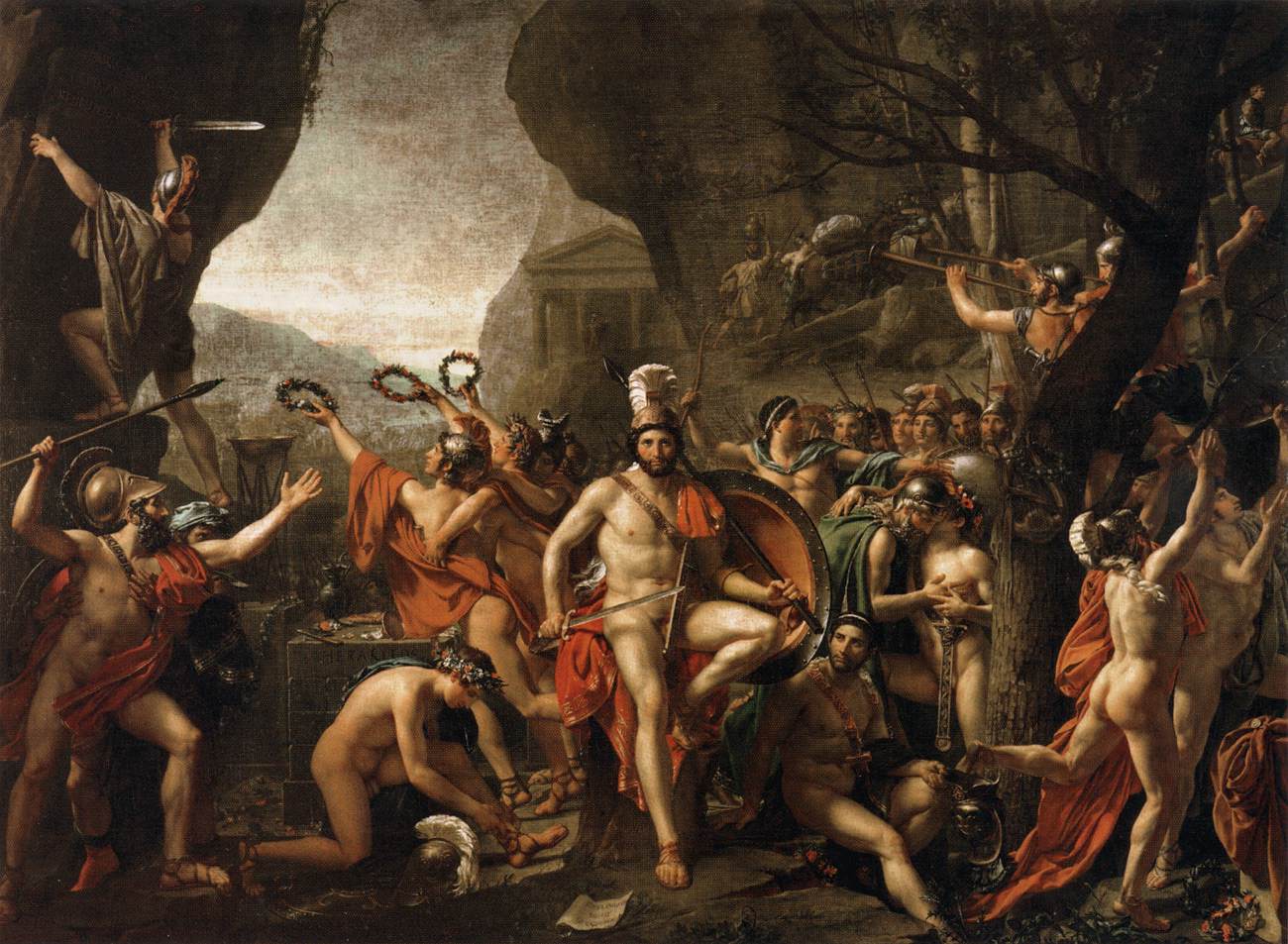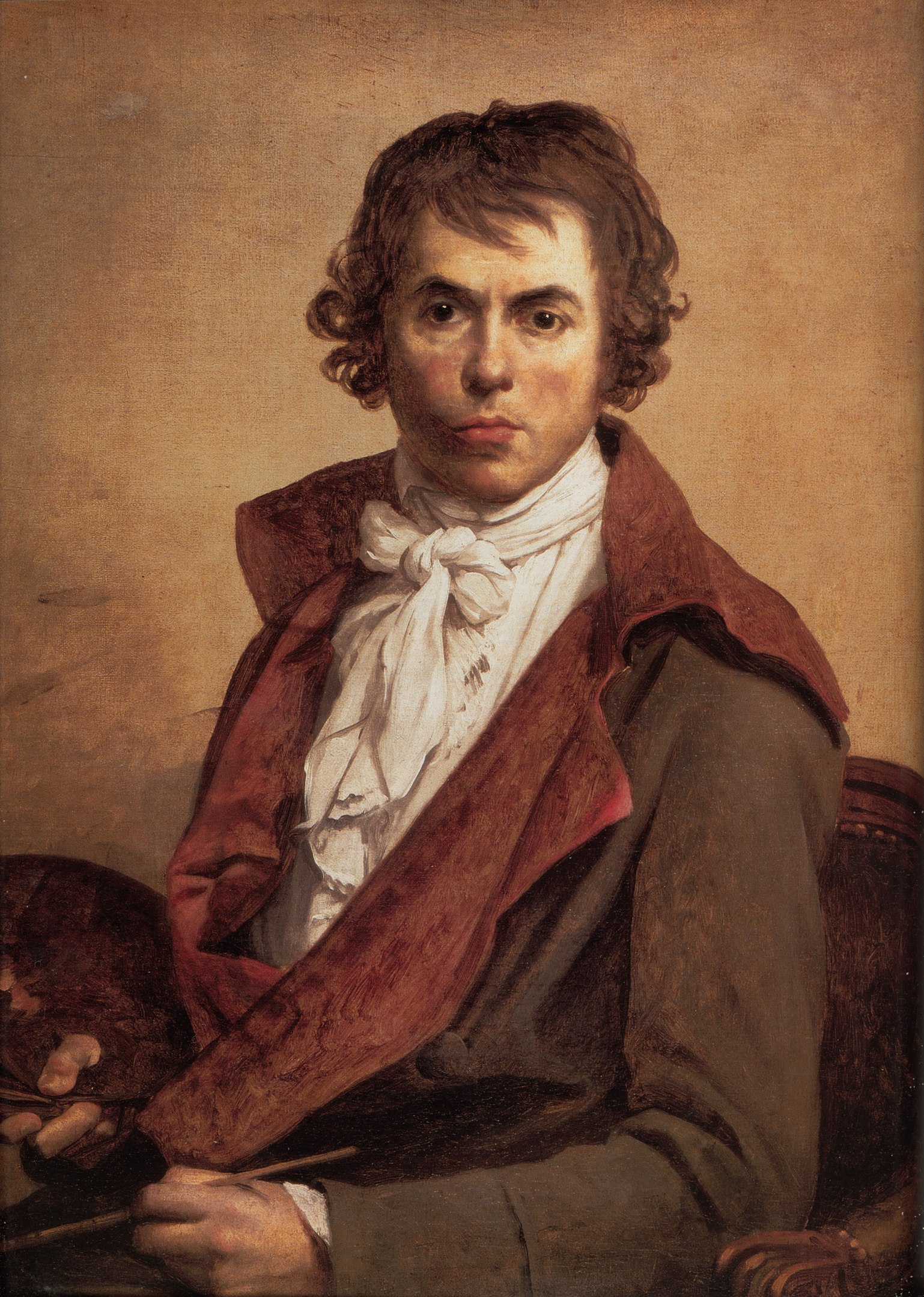



Leonidas at Thermopylae
oil on canvas • 395 x 531 cm
David had begun the Leonidas at Thermopylae in 1798 as a companion piece to The Intervention of the Sabine Women. However, it was completed much later, in 1814.
The subject concerns Leonidas, King of Sparta, who in 480 BC held the pass at Thermopylae against the invading Persian army of Xerxes. Vastly outnumbered, Leonidas and his 300 handpicked volunteers were killed, but only after their heroic defence had ensured the safe retreat of the Greek fleet.
In the final painting, as the sentinel trumpeters sound the call to arms, on the right two soldiers rush to gather their weapons that are hanging from the branches of an oak tree. Leonidas sits on a rock facing out at the viewer, contemplating his and his soldiers' fate. Seated at his right is Agis, his wife's brother, who looks to his commander for orders. To emphasize the fervent patriotism of the Spartans, David once again includes an oath, and behind Leonidas three young soldiers lift up wreaths above two altars dedicated to Hercules and Aphrodite.
On either side of Leonidas are two very young warriors, hardly more than boys, one of whom ties his sandal, while the other bids a last farewell to his aged father. Leonidas had tried to send the two young men away from the battle under the pretext of carrying a message, but they had refused to go. It is perhaps this undelivered scroll that is partially visible at Leonidas' feet; it reads in Greek, 'Leonidas, son of Anaxandrides, King to the Gerousia (Spartan Council of Elders). Greetings.' The final sacrifices having been made, all these men are ready to die for the glory of Sparta and in the background the baggage train departs with the possessions they will no longer need in this world. At the top left the soldier climbs the rock to inscribe the poignant message with the pommel of his sword.
 Jacques-Louis David
Jacques-Louis David